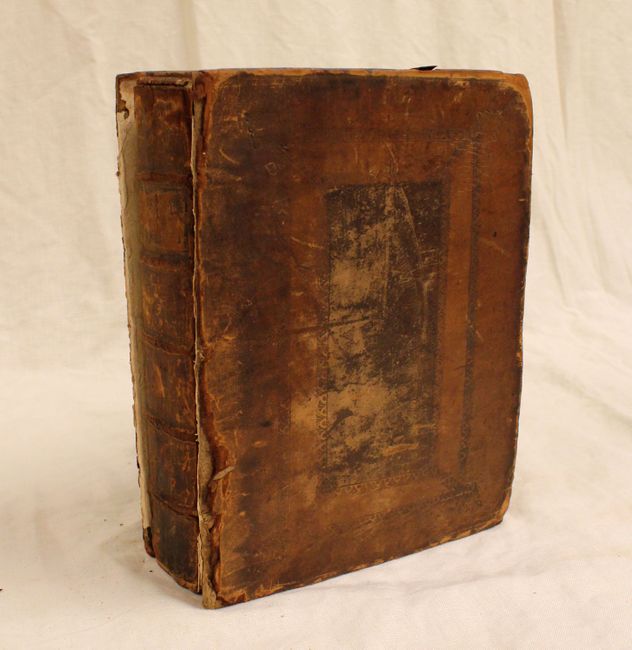Subject: Southwestern United States & Mexico
Period: 1721 (published)
Publication: The Philosophical Transactions from the Year 1700 to the Year 1720
Color: Black & White
Size:
7.5 x 9.3 inches
19.1 x 23.6 cm
This is an English version of Father Kino's important map that disproved the theory that California is an island. This was the first map to accurately depict the region, in particular the relative positions of the Colorado and Gila rivers and the correct location of the rivers, valleys and mountains of part of Sonora and Arizona. Kino's publication, first issued in 1705, was intended to disprove the island theory, but instead actually fueled the controversy and thus the map was reprinted many times.
The map is still bound in the original "The Philosophical Transactions from the Year 1700 (Where Mr. Lowthorp ends) to the Year 1720. Abridg'd, and Dispos'd under General Heads by Benjamin Motte." This is Volume II and contains two parts: Part III - The Physiological Papers, and Part IV - The Philological Papers. The text includes numerous essays on weather observations, accounts of meteors, aurora borealis, eruptions of Vesuvius, metals, fossils, botany and zoology to name a few. There are 40 engraved plates, of which three are maps, including one showing the area around Constantinople, and another titled, A Map of the New Philippine Islands. The two parts are bound together with embossed brown calf boards, raised bands on spine, 399 pp. (Part III), 266 pp. (Part IV), and 5 pp. index.
This scarce map is essential to any collection of California or the American Southwest, and is more desirable as it is still bound in its equally scarce source book.
References: cf. Wheat [TMW] #89; Wagner #483; Schwartz & Ehrenberg plt. #75.
Condition: B+
The Kino map is very good with a few tiny spots and a hint of toning along the edges of the sheet. The text and other plates are also very good with some light toning and marginal foxing. A few of the other plates also have minor binding tears that do not impact the engraved areas. Both covers and endpapers are detached, but the binding remains sound.












